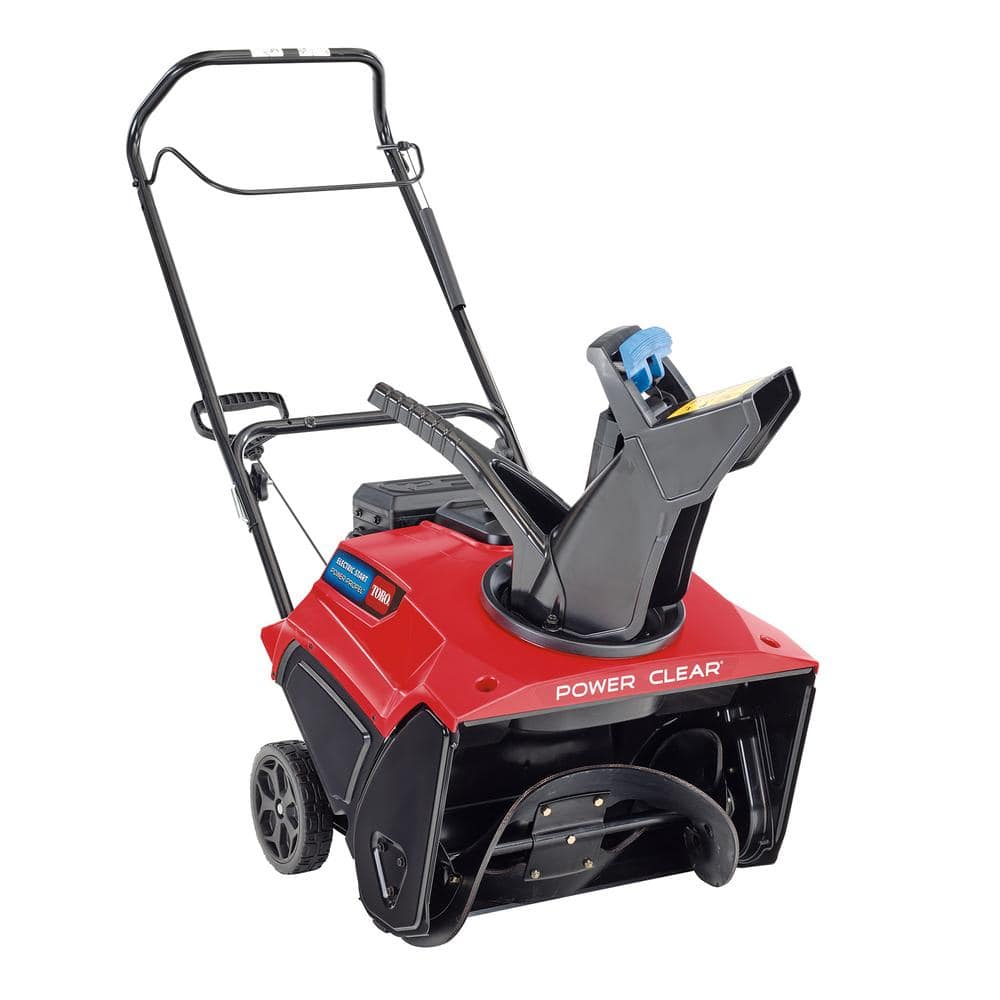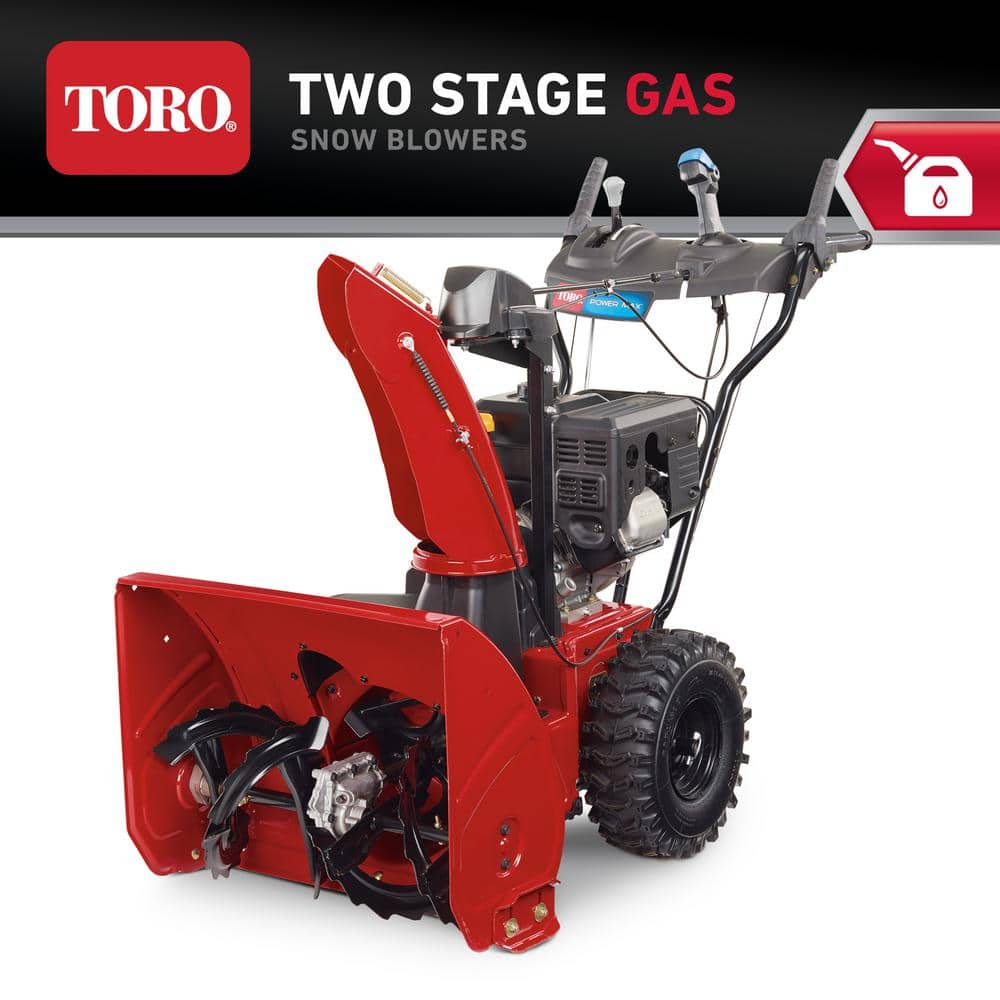Toro Power Clear 721 E 21 in. 212 cc Single-Stage Self Propelled Electric Start Gas Snow Blower
Toro 21 inch Gas Self-Propelled Single Stage Snow Blower. Electric Start simple and easy to use with push button start. Easy storage with this compact design.
Combining a perfect blend of power and efficiency, the Toro Power Clear 721 E Single Stage 21 in. Gas Snow Blower is second to none for tough jobs. The blower features push-of-a-button electric start, and its powerful 212cc 4-cycle OHV engine launches snow 35 ft. Shred snow fast with the patented Power Curve system, while the self-propel Power Propel system gets you moving quickly. Garage already filled to the brim. No worries, as the blower’s compact design makes for easy storage. Toro stands behind this product with a 2-year Guaranteed-to-Start promise and full warranty, so you can rest easy knowing you’re ready for whatever winter has in store. Count on it.
- Easy Start. Simply push the button and you’re ready to snow blow with electric start
- Power to blast through snow; Toro’s powerful 212cc 4-cycle OHV engine gives you the power to slice through snow in no time and throw it 35 ft.
- Get a move on; keep moving to get the job done faster with the self-propel Power Propel system; the unique scraper keeps the paddle in constant contact with the ground, pulling you through the snow
- Shreds snow fast; efficiently shreds through snow while reducing clogging with the curved rubber paddles and housing of Power Curve Technology
- Take aim with ease; aim exactly where you want to throw snow with the mounted chute lever
- Put snow where you want it; with a touch of the hand, the locking deflector lets you aim exactly where you want to throw snow from the chute
- More room for what matters; the sleek, compact design means you can easily store it for quick use and have plenty of room for the stuff that really matters
- Right fit for you; ideal for medium-sized driveways that can hold up to 9 parked cars and 2 in.-9 in. of snow, with limited garage or shed storage
- We’ve got you covered; you can rest easy knowing Toro stands behind this product with a 2-year full warranty; count on it
- Guaranteed quick start; starts in 1 or 2 pulls with the guaranteed-to-start promise
- Tested and trusted; choose with confidence, knowing millions of people worldwide count on Toro snow blowers
- For best starting results use non-ethanol fuel with an octane rating of 87 or higher, use fresh fuel less than 30-days old, add fuel stabilizer to reduce starting problems, do not mix oil with gas
- Based on average Traqline unit share for snow blower market from 2013 – March 2020
Additional information
| Assembled Depth x Height x Width(in.) | 48 x 42 x 21 |
|---|---|
| Auger Diameter (in.) | 8.5 |
| Clearing Width (In.) | 21 |
| Ideal Snow Depth (In.) | 9 |
| Intake Height (in.) | 12.5 |
| Tire Height (in.) | 7 |
| Tire Width (in.) | 1.75 |
| Certifications and Listings | No Certifications or Listings |
| Manufacturer Warranty | 2-Year Full with Guaranteed to Start |






by John
Assembly was easy and it started ok, but won’t know how well it performs until we get snow.
by William
As I have just purchased my unit in October, there has not been any snow. The assembly instructions however only had pictures without any wording to add the assembly. I prefer reading and pictures in the form of a manual for assembling and maintenance. On a positive note, once assembled I tested it and started and operated very well. I’m looking forward to use it when it does snow.
by Bob
I have not a chance to use this yet because Winter is just starting but I know Toro has always made the best snow blowers so I am not worried at all about its performance I know it will be great.
by Dave
No more shoveling, smile on this face! Like summer better, love .
by Earl
Easy to assemble and set up, started up no problem.